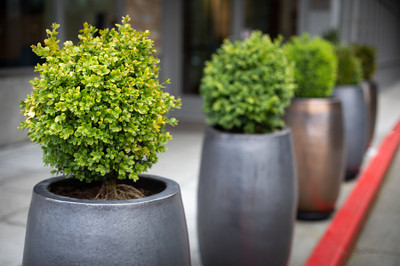Winter Container Gardening: Protect Your Plants & Planters in Cold Weather
Posted by Jason Wyrwicz on Nov 25th 2025
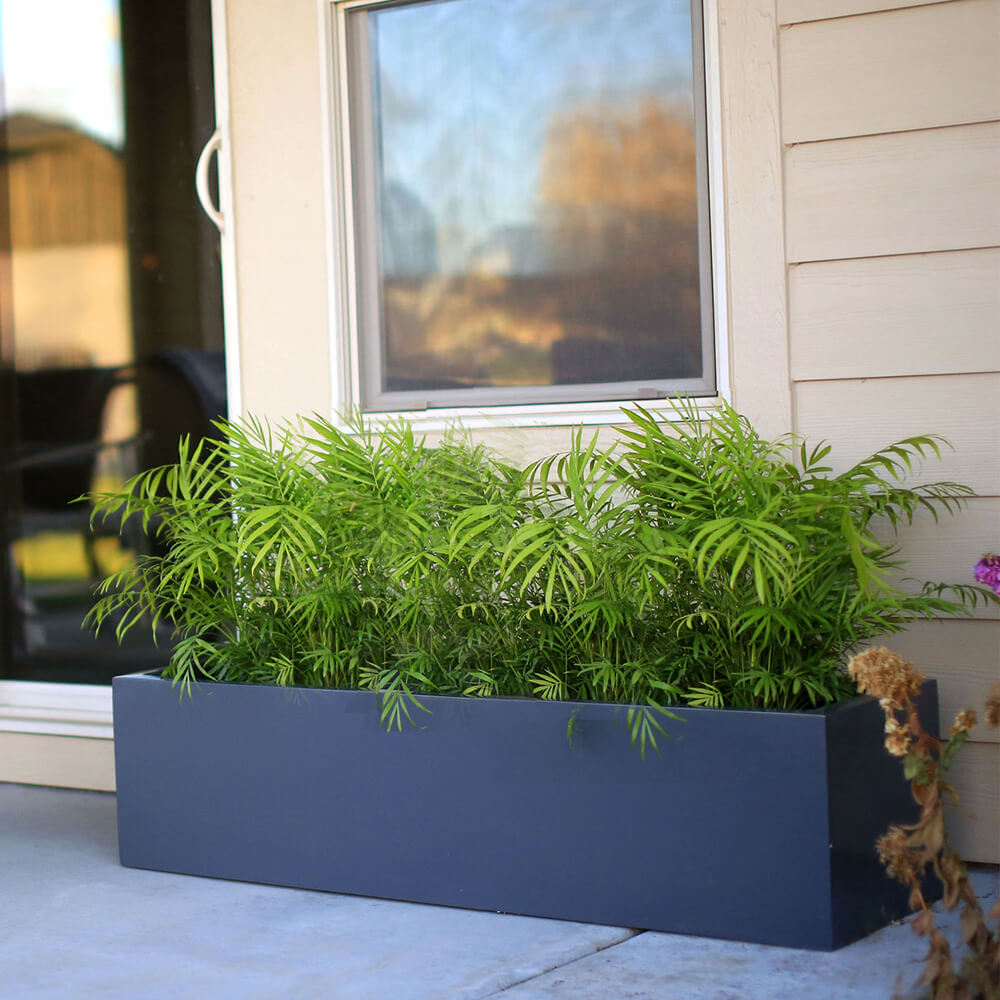
When temperatures drop, container gardeners face two big challenges: keeping plants alive and making sure planters don’t crack, chip, or fall apart. Choosing winter-hardy plants is important, but the container itself plays a huge role in whether your display survives the season.
This guide brings together our best winter advice into one place, with a special focus on planters that can stay outside in winter. You’ll learn which materials handle freezing weather, how to winterproof your containers, how to protect plants from frost and snow, simple winter houseplant care tips, and design ideas for beautiful cold-weather planters.
Why Your Planter Choice Matters in Winter
As winter sets in, your planters deal with constant freeze–thaw cycles. Water in soil and in the planter walls expands when it freezes and contracts when it thaws. Materials that can’t flex or drain properly are more likely to crack, chip, or flake.
The best winter-proof containers do three things well:
- Handle freeze - thaw movement without splitting or crumbling.
- Insulate roots so temperature swings are less extreme.
- Drain excess water so saturated soil doesn’t freeze into a solid block of ice.
Best Planter Materials That Can Stay Outside in Winter
Not all containers are created equal. Here are planter materials that perform especially well in cold weather.
Fiberglass
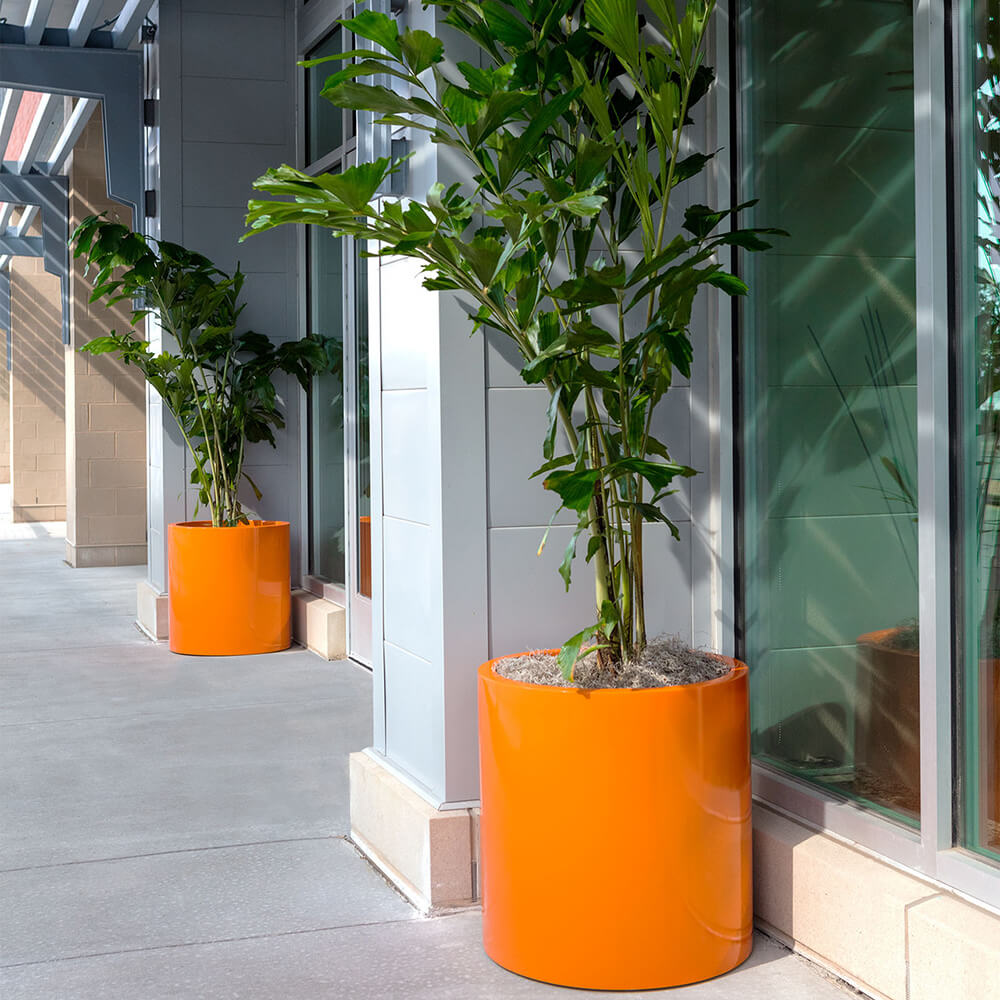
Fiberglass planters are a winter workhorse. Unlike terracotta or many ceramics, they don’t easily crack when temperatures dip below freezing.
- The slightly flexible structure allows them to expand and contract with temperature changes.
- They offer solid insulation for plant roots without the heavy weight of stone or concrete.
- They’re available in a huge range of shapes, sizes, and finishes suitable for homes and commercial spaces.
Fiberstone
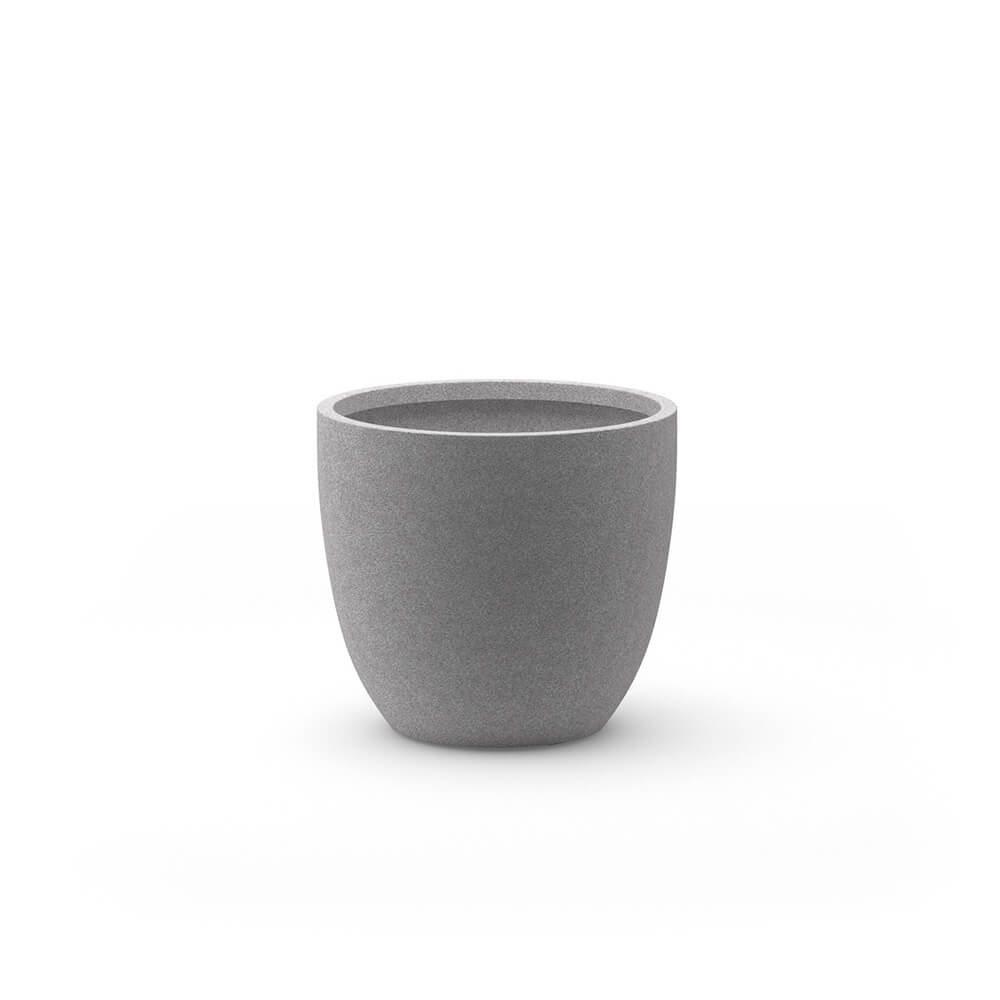
Fiberstone combines mineral components with resins to create a planter that looks like stone but is lighter and more forgiving.
- Highly resistant to cracking in freezing conditions.
- Excellent insulation thanks to its dense, stone-like body.
- Ideal when you want a high-end look that can stay outdoors year-round.
Heavy-Duty Plastic
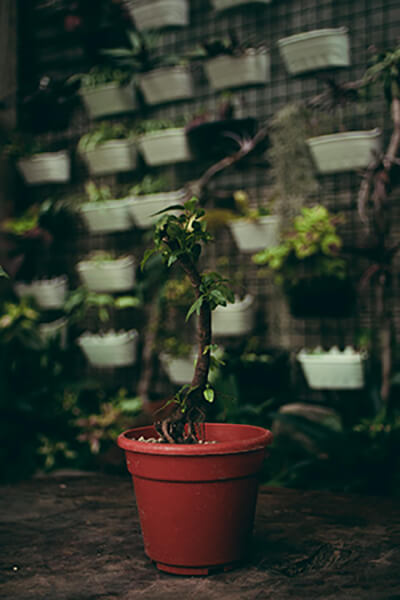
Not all plastic planters are equal, but high-quality cold-weather plastics can be surprisingly tough.
- Flexible enough to handle freeze–thaw cycles without breaking.
- Lightweight and easy to move, even when planted.
- Often the most budget-friendly option if you need to outfit many containers.
Concrete
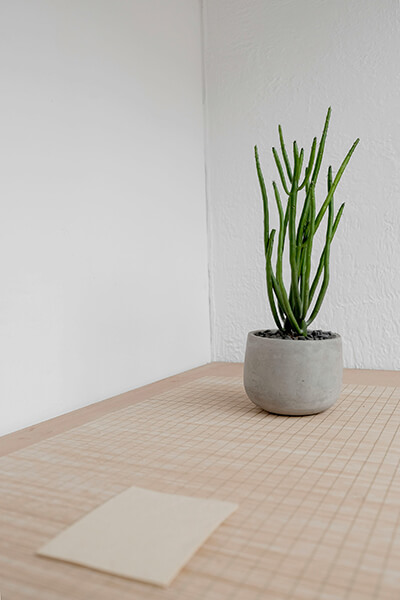
Concrete planters are famously tough and hold up well to snow, ice, and wind.
- Excellent thermal mass helps buffer roots from rapid temperature swings.
- Extremely durable and long-lasting with proper drainage.
- Develop a natural patina over time that adds character to your outdoor space.
Stone
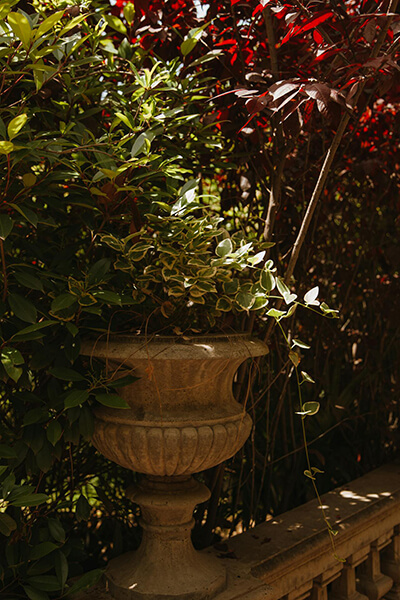
Natural stone planters can withstand decades of harsh winters.
- Highly resistant to cracking and surface damage.
- Superb thermal mass to stabilize soil temperatures.
- Perfect for high-visibility entrances, terraces, or luxury landscapes.
Top Fiberglass Planters for Winter Displays
All high-quality fiberglass planters are winter-ready, but a few stand out for cold-weather container gardens and commercial installations.
1. Tolga Modern Planter Box
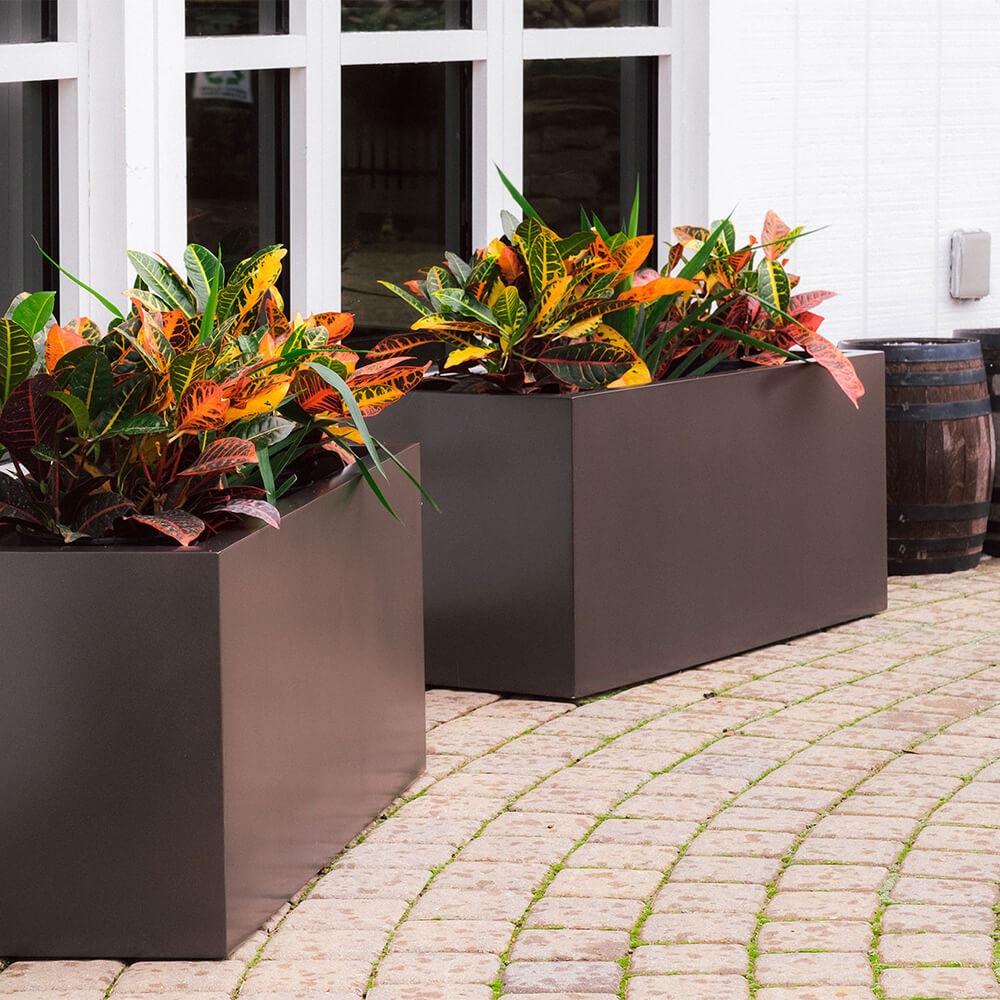
This modern rectangular planter is ideal for framing entrances, lining walkways, or creating low winter hedges with evergreens or colorful shrubs. Its broad soil volume keeps roots better insulated, and the simple silhouette works with both residential and commercial architecture.
2. Wannsee Large Round Tree Planter

Perfect for feature trees and specimen shrubs, the Wannsee planter offers generous depth and width for root systems. The rounded profile minimizes corners where wind and ice can collect, while the fiberglass body protects roots from temperature swings.
3. Alzira Round Tapered Plant Pot
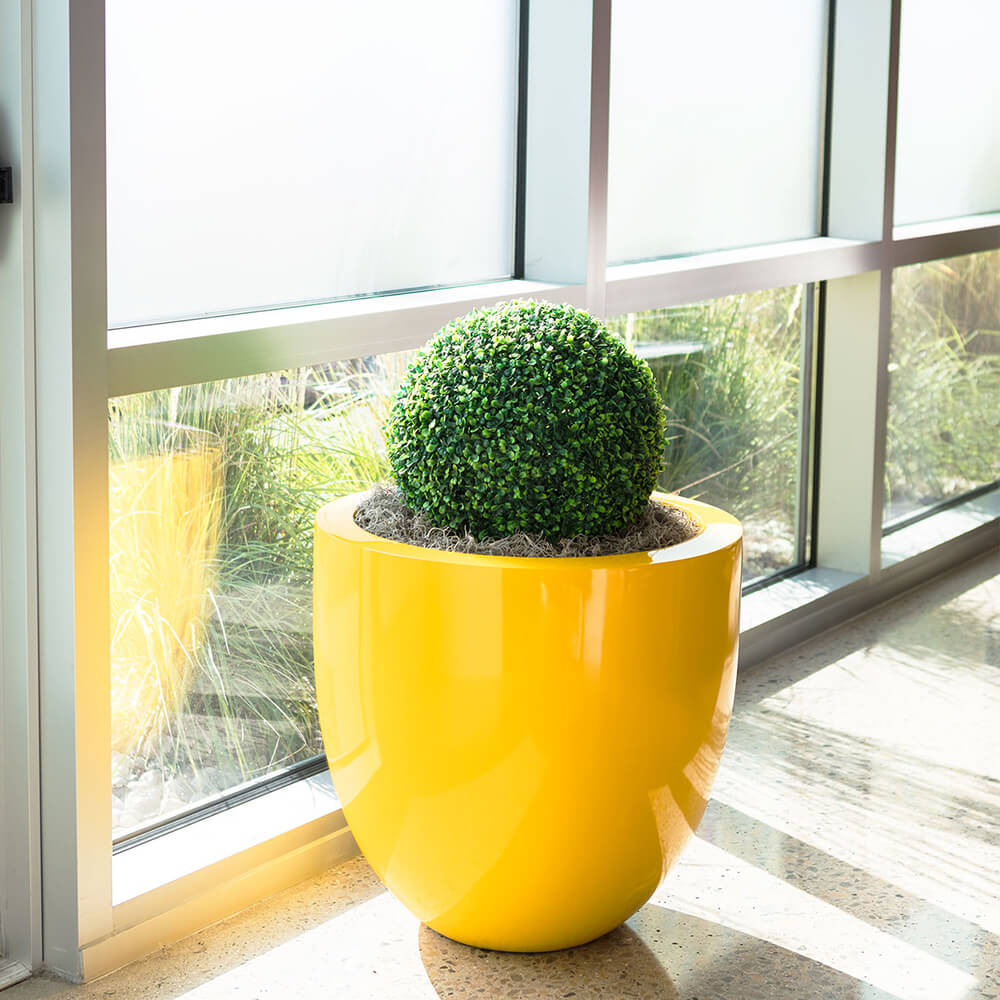
The Alzira’s tall, tapered shape is ideal when you want height without taking up too much floor space. Lightweight fiberglass makes it simple to reposition as needed, even when temperatures change and you want to adjust your layout.
4. Santa Barbara Fluted Planter Pot

With its fluted silhouette and glossy finish, the Santa Barbara planter brings a traditional-meets-modern feel to winter displays. It pairs especially well with palms, structural evergreens, or tall grasses that keep visual interest through cold months.
5. Saint Tropez Tall Vase Planter Pot
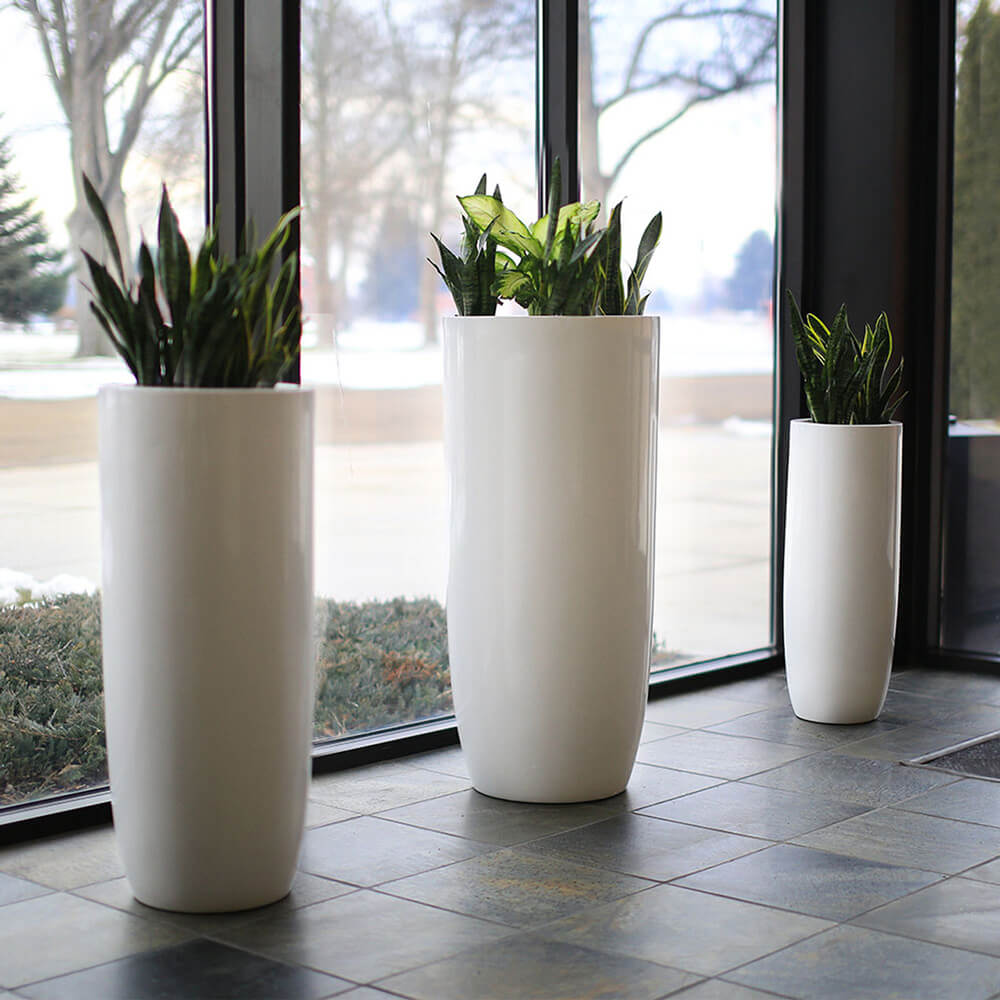
The Saint Tropez planter is made for vertical impact. Its deep interior gives roots extra insulation and keeps soil from freezing as quickly, while the slim profile reduces wind exposure. It’s a strong choice for lobbies, hotel entrances, and storefronts.
How to Winterproof Your Planters
Picking the right material is only step one. A few extra moves can dramatically improve your containers’ chances of surviving winter in great shape.
1. Know Your Climate and Plant Hardiness
- Use your local hardiness zone as a baseline when choosing plants for outdoor winter containers.
- Reserve the most exposed spots for your toughest plants; place more tender choices in sheltered microclimates.
2. Prioritize Good Drainage
- Make sure your containers have drainage holes so water can escape.
- Use high-quality potting mix instead of heavy garden soil to prevent compaction and waterlogging.
- Raise planters on feet, bricks, or small blocks so drainage holes don’t freeze to patios or decks.
3. Choose Larger Containers When Possible
- More soil volume equals better insulation for roots.
- Deep planters protect root systems from surface freeze and wind better than very shallow ones.
4. Use Mulch for Short-Term Insulation
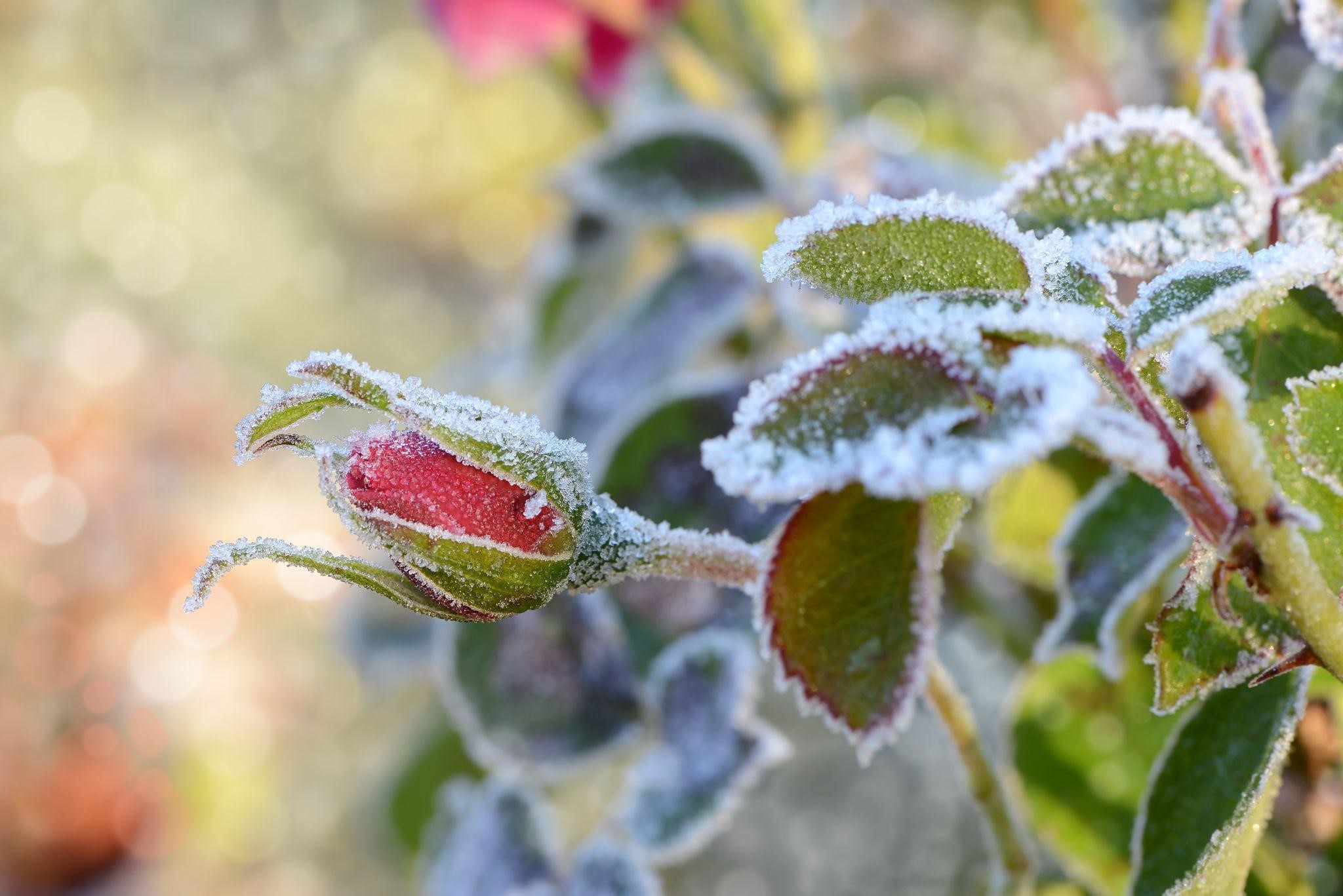
- Apply a light layer of shredded bark, pine needles, straw, or leaf mold around the base of plants during cold snaps.
- Remove or thin the mulch once temperatures moderate so the soil can warm up again.
5. Group and Wrap Containers
- Cluster several planters together so they share warmth and shield one another from wind.
- Wrap very exposed containers in burlap, frost cloth, or even bubble wrap to reduce temperature shock.
Protecting Plants from Frost and Snow
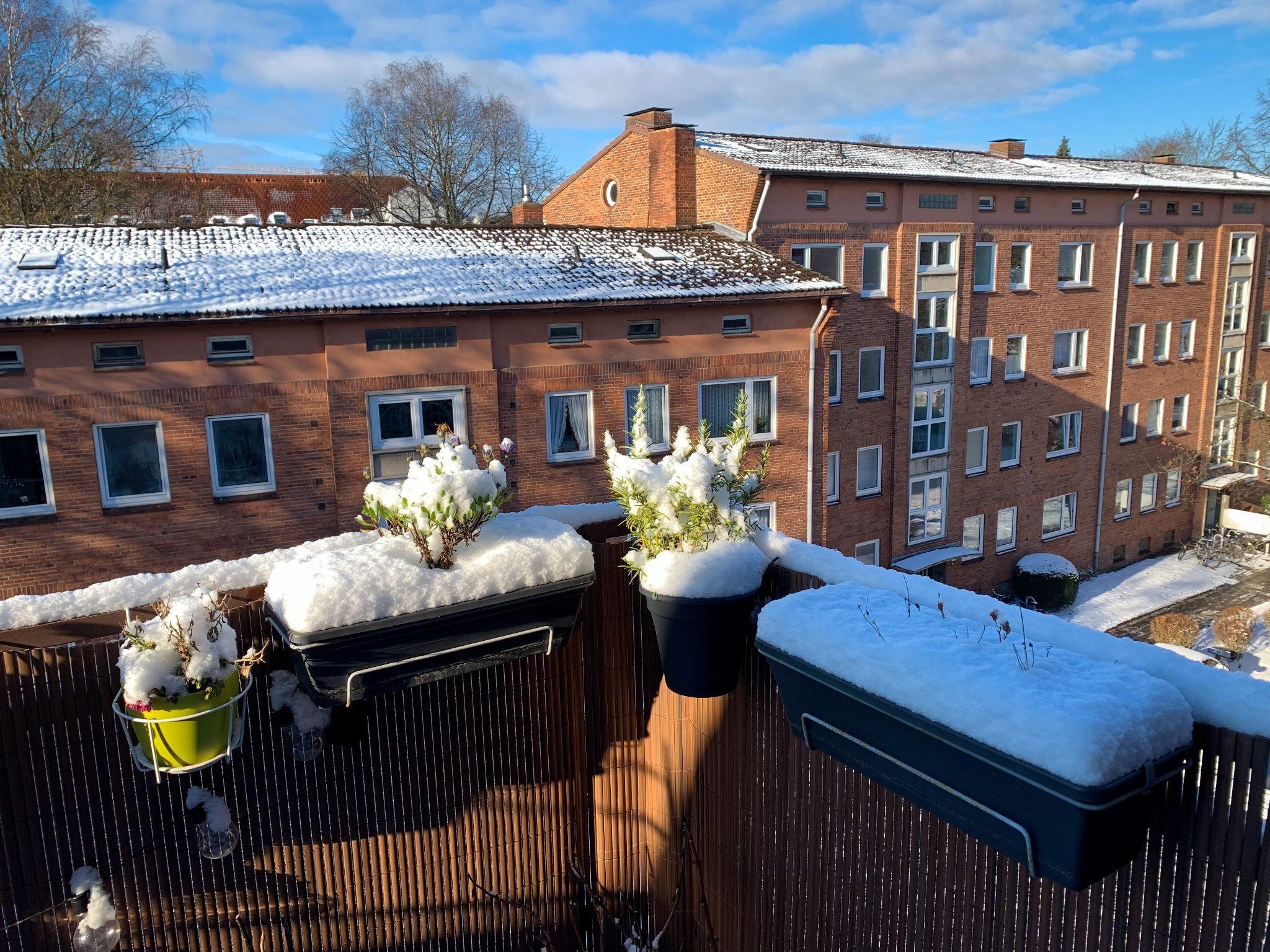
When a cold snap, frost, or snowstorm is on the way, a few quick actions can help keep your plants alive.
1. Move Pots to Safer Spots
- Slide containers against walls, fences, or railings that block wind and radiate a bit of heat.
- Use covered porches or overhangs to shield plants from snow and ice.
- Store fully dormant container plants in unheated garages, sheds, or cold frames where temperatures stay cold but stable.
2. Cover Plants on the Coldest Nights
- Drape frost cloth, bedsheets, or light blankets over vulnerable containers when frost is forecast.
- Secure covers so they don’t blow away, and extend them down around the pot itself.
- Remove covers during the day so plants can get light and air.
3. Adjust Winter Watering
- Check soil with your fingers; water only when it’s dry a few inches down.
- Water in the warmest part of the day so water can soak in before nighttime freezes.
- Avoid soaking plants right before a hard freeze to prevent ice from forming around roots.
Winter Container Care for Indoor Houseplants
Houseplants in containers may be safe from snow, but winter still stresses them with short days, dry indoor air, and temperature fluctuations. A few tweaks can keep them in good shape until spring.
1. Maximize Light
- Move plants to your brightest windows, often east- or south-facing in winter.
- Clean windows to remove dust and film that reduce light.
- Rotate plants a quarter turn each watering so growth stays even.
- Gently dust or wipe leaves so they can absorb as much light as possible.
- Use grow lights or fluorescent bulbs if natural light is limited, placing them 8–12 inches above foliage.
2. Water Less Often
- Let the top few inches of soil dry before watering most houseplants.
- Use room-temperature water to prevent root shock.
- Empty saucers so roots don’t sit in standing water.
3. Reduce or Pause Fertilizer
- Most plants slow down in winter and don’t need regular feeding.
- Skip fertilizer until you see active new growth in spring, or use a half-strength dose only occasionally.
4. Raise Humidity
- Cluster plants together to create a more humid microclimate.
- Place pots on pebble trays with water below (not touching) the container base.
- Consider a humidifier if your home’s air is very dry.
5. Avoid Drafts and Heat Sources
- Keep plants away from radiators, fireplaces, vents, and space heaters.
- Avoid cold drafts from frequently opened doors and leaky windows.
- Keep foliage a few inches away from cold window glass.
6. Save Repotting for Spring
- Unless you’re dealing with a serious issue (like root rot), avoid repotting during winter dormancy.
- Wait until days lengthen and new growth appears for major repotting projects.
Winter Planter Ideas for Entrances, Patios & Commercial Spaces
Once your plants and planters are ready for the cold, you can focus on design. Winter containers can be just as striking as summer displays when you layer structure, color, and texture.
1. Blend Living and Decorative Materials

- Combine evergreen shrubs or small conifers with dried twigs, ornamental grasses, or seed heads.
- Add ornamental cabbages, kales, or berries for extra color.
- Use subtle ornaments or lights if you want a more festive feel.
2. Coordinate Planters for Big Impact

- Use matching containers in different sizes to flank doors or line walkways.
- Repeat plant varieties or shapes, like Buxus spheres, pyramids, or spirals, for a cohesive theme.
- Place planters against a contrasting backdrop so their forms really stand out.
3. Embrace Metal and Modern Finishes
- Galvanized and metal-look planters pair well with both modern and traditional buildings.
- Weathering over time can add a sense of history and character.
- They look especially strong with structural plants like upright grasses or dwarf willows.
4. Use Color and Berries as Accents
- Choose evergreens with interesting foliage colors or variegation for year-round appeal.
- Add berry-bearing plants or stems for a pop of seasonal color.
- Keep bright accents limited so they read as intentional highlights rather than clutter.
Bringing It All Together
Winter doesn’t have to mean empty containers and dull outdoor spaces. By selecting planters that can stay outside in winter, giving your plants a bit of extra protection from frost and snow, and adjusting how you care for indoor houseplants, you can enjoy greenery all season long.
Durable materials like fiberglass, fiberstone, plastic, concrete, and stone stand up to freezing temperatures while insulating roots. Smart winterproofing - good drainage, larger soil volumes, strategic grouping, and temporary mulch - helps your plants ride out the cold. Add thoughtful design, from blended materials to coordinated containers, and your winter planters become a highlight rather than an afterthought.
With the right combination of hardy plants and winter-ready planters, your container garden can thrive in cold weather and be ready to burst into new growth when spring arrives.


